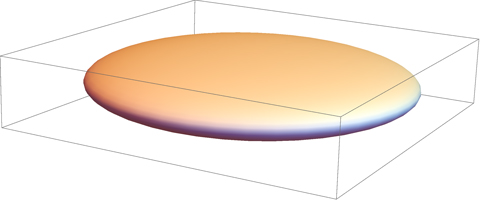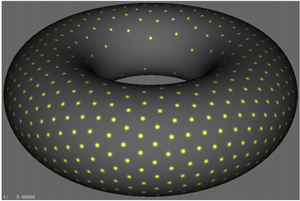The problems of minimizing the potential energy of electrons on a sphere, or maximizing the smallest distance between the electrons, have been well-studied. E.g., see the earlier MO question "Distributing points evenly on a sphere."
My question concerns the same problems on an ellipsoid with two axis dimensions $a=b$ equal, and the third dimension $c$ much shorter, so the ellipsoid is pancake-like:

Ellipsoid axis dimensions: $a=5, b=5, c=1$, with $c$ the vertical dimension.
It is natural to expect that with $c \ll a,b$, the electrons form an approximate honeycomb hexagonal packing on the upper and lower surface of the ellipsoid, perhaps with some edge effects near the horizontal midplane.
Has this problem been studied? Are there results established under certain conditions?
Update. Here is a nice image from the Müller/Frauendiener paper that Carlo Beenakker cites:

Fig.6 (detail): $1024$ charged particles on a torus.
